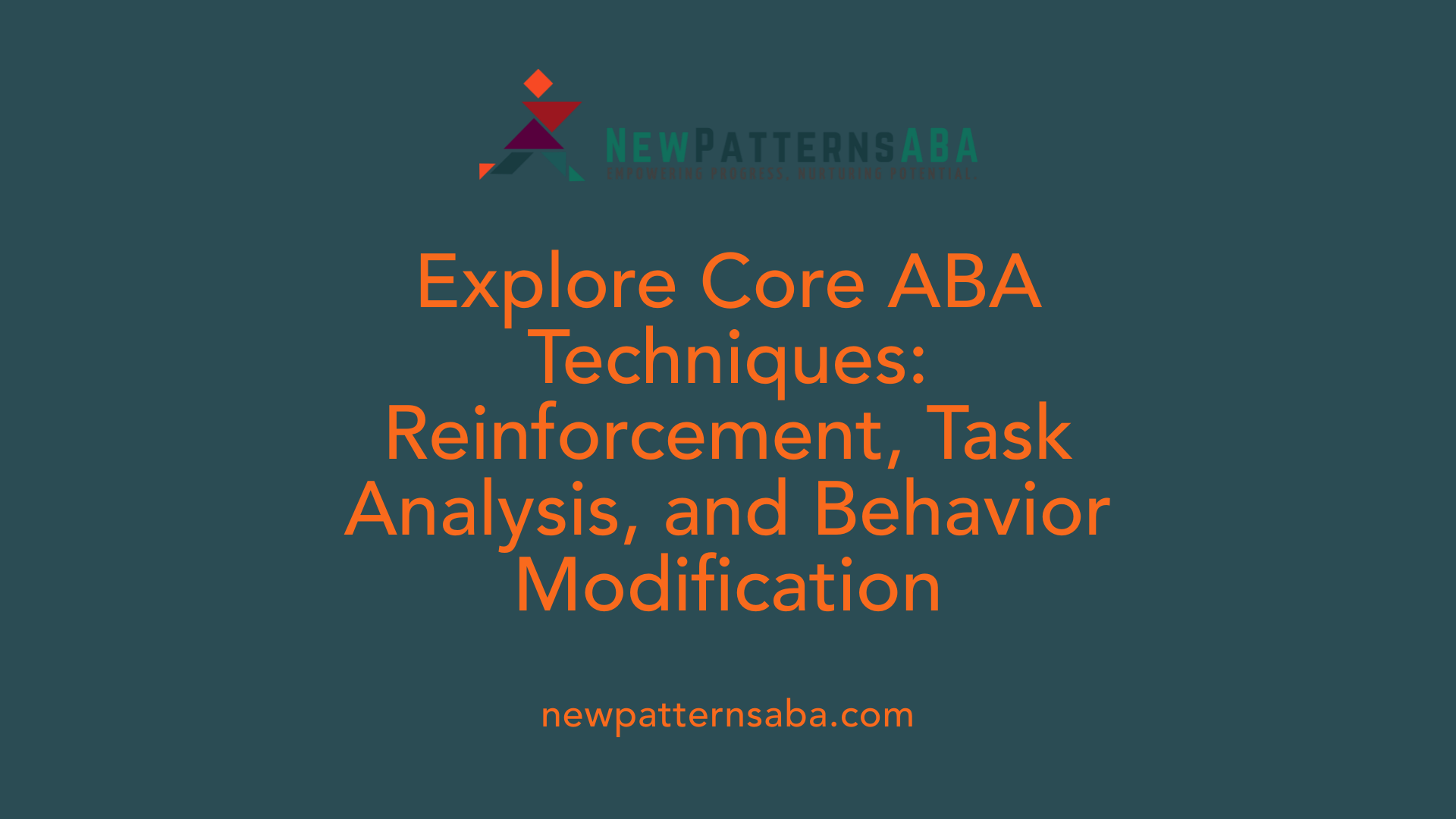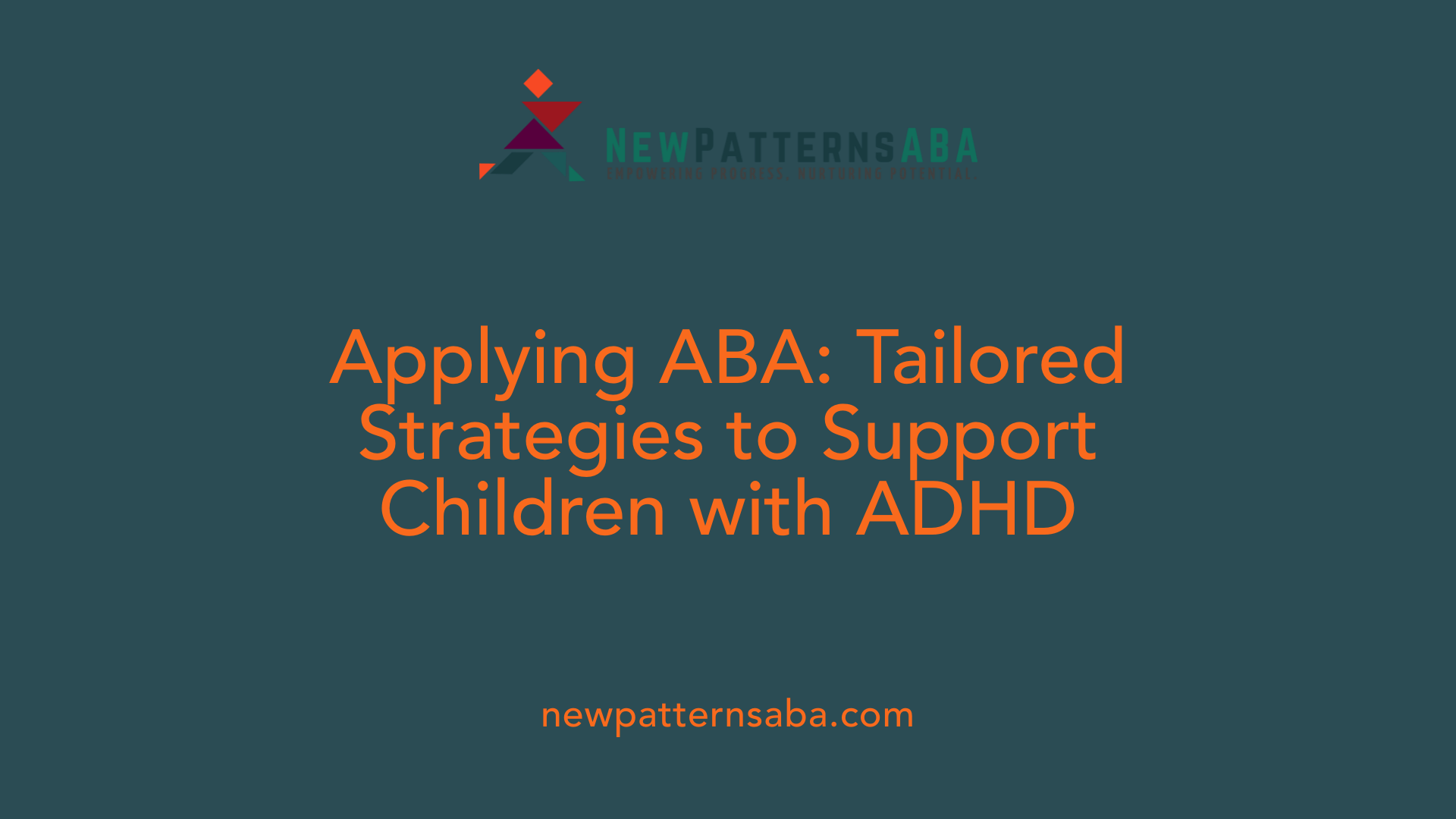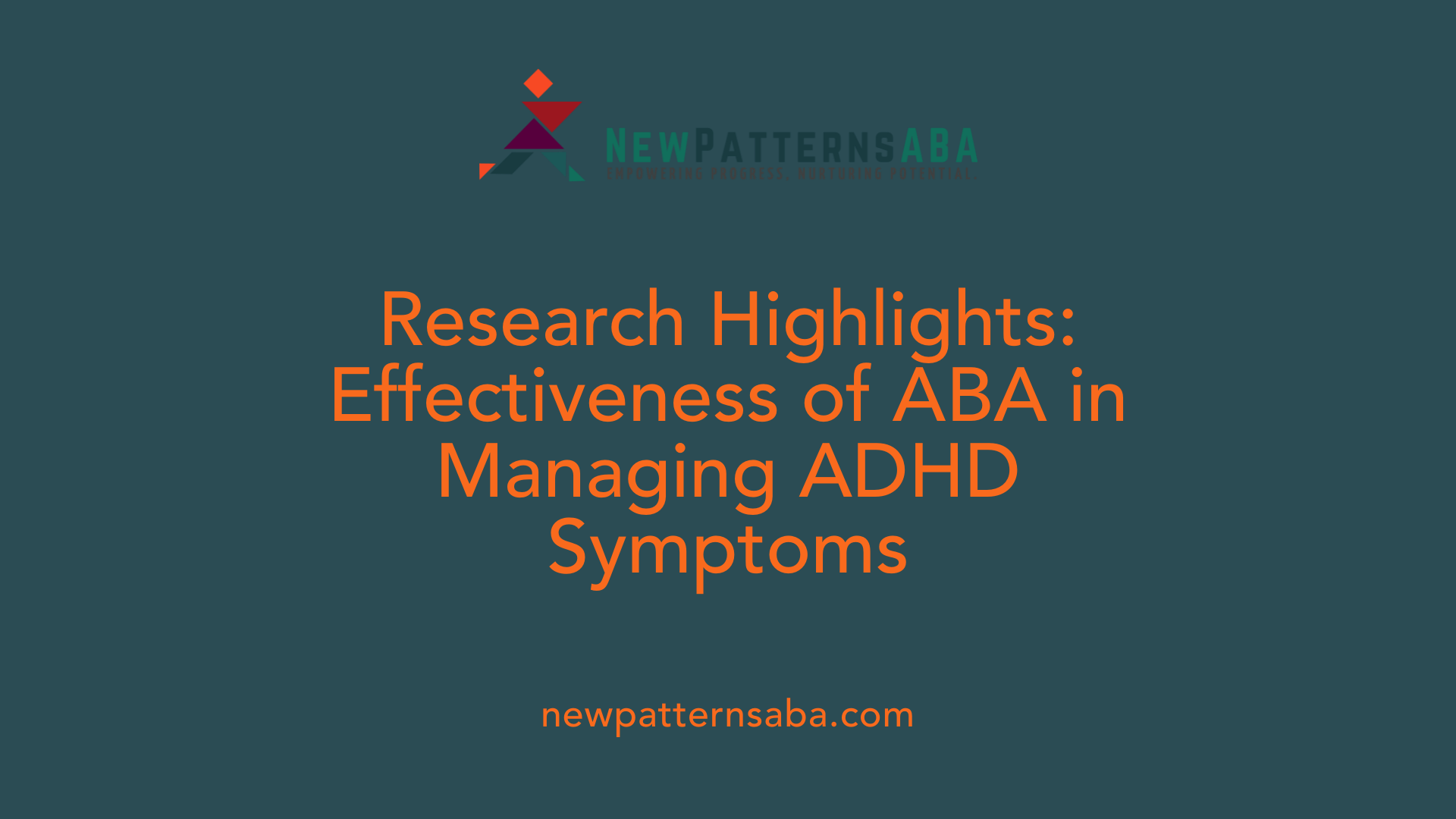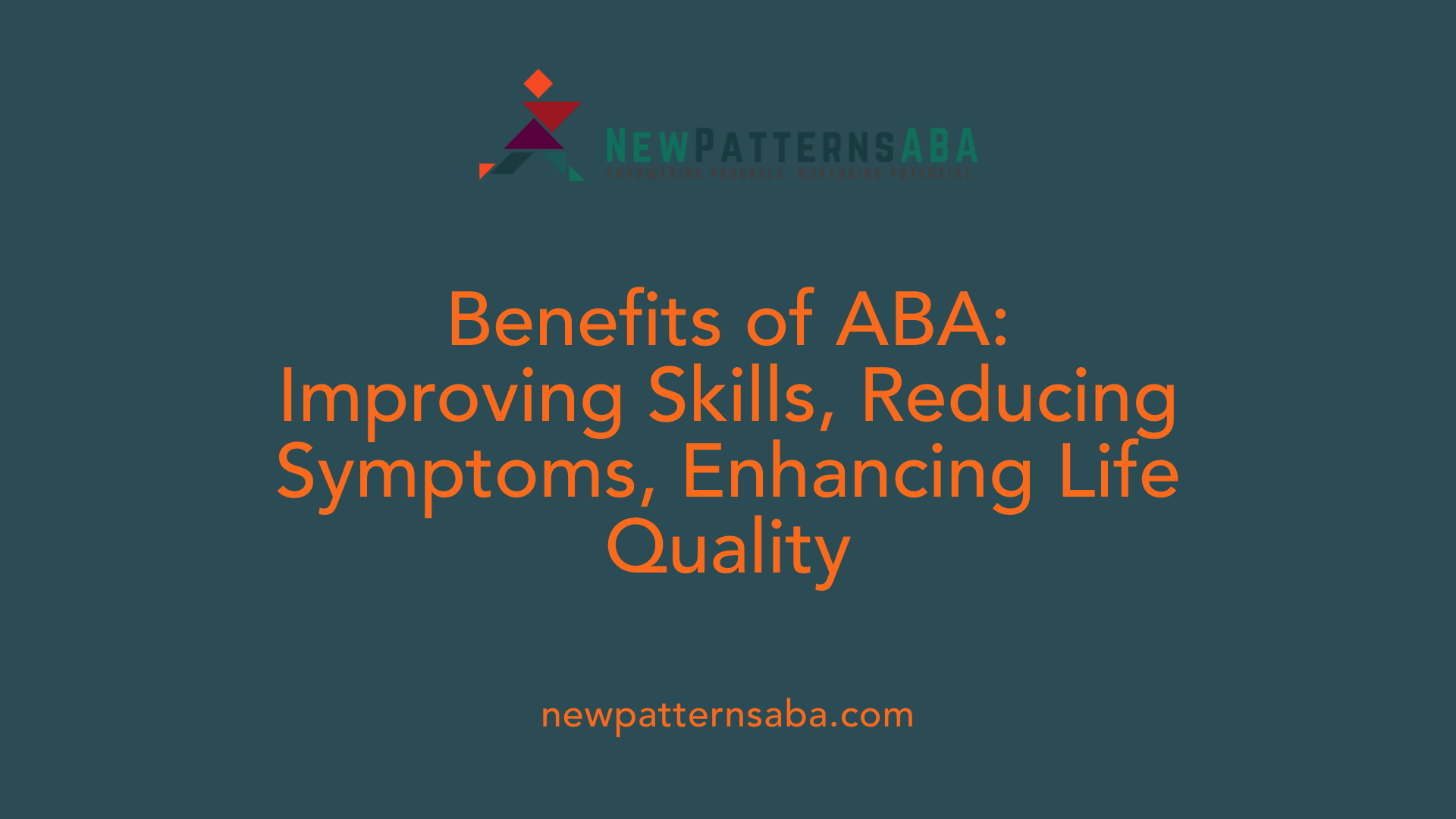Understanding ABA Therapy as a Supplementary Treatment for ADHD
Applied Behavior Analysis (ABA) therapy is increasingly recognized as a valuable component in managing Attention Deficit Hyperactivity Disorder (ADHD) symptoms. While traditionally associated with autism spectrum disorder, ABA principles are adaptable to help children and even adults with ADHD develop behavioral skills, improve self-control, and enhance daily functioning. This article explores the core techniques, applications, benefits, and scientific insights surrounding ABA therapy for ADHD, emphasizing its role alongside medications and other interventions.
Core Techniques and Methodologies of ABA Therapy in ADHD Treatment

What are the core techniques and methodologies of ABA therapy that are relevant to treating ADHD?
Applied Behavior Analysis (ABA) therapy uses several fundamental techniques to help children develop better behaviors and skills, especially in managing ADHD symptoms. These core methods include positive reinforcement, task analysis, data collection, and behavior modification strategies.
Positive reinforcement is one of the most important components. It involves rewarding desired behaviors so that children are encouraged to repeat them. For instance, praising a child for completing homework or following classroom rules can increase the likelihood that these behaviors occur consistently.
Task analysis breaks down complex tasks into smaller, manageable steps. This makes it easier for children with ADHD to learn routines and skills incrementally. Clear, step-by-step instructions help improve obedience and task completion.
Data collection and assessment are central to ABA. Practitioners regularly observe and record behaviors to evaluate progress. Functional behavior assessments (FBAs) identify the triggers and functions of specific behaviors, allowing for tailored intervention plans.
Behavior modification strategies focus on changing patterns of behavior by manipulating antecedents and consequences. These include setting structured routines, creating predictable environments, and applying reinforcement or response cost techniques to reduce disruptive or inattentive behaviors.
In the context of ADHD, ABA emphasizes establishing structured routines, setting clear goals, and using reinforcement to enhance attention span, impulse control, and persistence. Although traditionally associated with autism spectrum disorder, ABA techniques can be adapted to support children with ADHD in various settings.
Besides behavioral techniques, other interventions like neurofeedback—which trains brainwave regulation—are also effective for ADHD. Combining ABA with these methods can produce comprehensive benefits.
Overall, ABA’s systematic approach offers a reliable way to modify behaviors, develop skills, and improve functioning in children with ADHD, complementing medication and other therapies. Its focus on structured routines, reinforcement, and careful assessment makes ABA a valuable component of ADHD treatment plans.
Applying ABA Techniques to Children with ADHD

How is ABA therapy applied to children with ADHD?
ABA therapy is a structured approach that involves analyzing a child's behaviors to uncover their underlying causes and motivations. This process often begins with behavioral assessments such as Functional Behavior Assessments (FBA) and skills assessments. These evaluations help identify specific behaviors that need modification and gauge the child's current skill levels.
Once assessments are completed, a licensed behavioral analyst, such as a BCBA, develops a personalized behavior intervention plan (BIP). This plan is tailored to the child's unique needs, preferences, and environment. The goal is to promote positive behaviors, reduce impulsivity and hyperactivity, and improve social and daily living skills.
Parents and teachers play a critical role in implementing ABA strategies. Training parents in behavior modification techniques ensures consistency across home and school settings. Teachers may incorporate visual schedules and environmental modifications to keep children engaged and reduce distractions.
ABA techniques primarily utilize reinforcement strategies, which involve rewarding desirable behaviors to increase their frequency. For example, giving praise or tokens when a child follows classroom rules encourages continued compliance.
Visual schedules and environmental modifications further support attention and routine establishment. For instance, clear daily routines or visual cues help children understand expectations, reducing confusion and impulsive behaviors.
Overall, ABA therapy combines behavioral principles like differential reinforcement, discrete trial training (DTT), and self-management training. These methods work together to teach new skills, manage behavioral challenges, and foster independence.
While ABA does not alter the biological aspects of ADHD, it effectively addresses learned behaviors and environment-driven responses. When combined with medication and other supportive therapies, ABA provides a comprehensive strategy to help children with ADHD manage symptoms and thrive in various settings.
Managing ADHD Behaviors with ABA Strategies
How does ABA therapy help manage ADHD behaviors and what strategies are involved?
Applied Behavior Analysis (ABA) is an effective approach to managing symptoms of ADHD in children by promoting positive behaviors and reducing disruptive ones. It focuses on understanding the individual child's behavioral patterns through thorough assessments and then tailoring interventions accordingly.
One core element of ABA therapy is the use of positive reinforcement, which encourages desirable behaviors such as staying attentive, controlling impulses, or completing tasks. Therapists typically employ strategies like token economies, where children earn tokens for specific actions that they can trade for rewards. Contingency management involves setting clear consequences for behaviors, like praise or additional privileges, which help shape behavior over time.
ABA also uses visual schedules and self-management techniques to help children follow routines and develop independence. Social skills training can improve peer interactions and communication.
To maximize effectiveness, ABA practitioners collaborate closely with caregivers and educators, ensuring consistency in reinforcement strategies across home and school settings. This combined effort helps children with ADHD develop better self-control, attention skills, and task completion capabilities.
Overall, ABA offers a structured, individualized framework to improve behavioral regulation and functional skills, significantly helping children manage ADHD symptoms more effectively.
Research Evidence and Effectiveness of ABA for ADHD

Review of 14 scientific articles
A comprehensive review of 14 scientific articles examining the use of Applied Behavior Analysis (ABA) in treating symptoms of ADHD revealed promising results. Out of these, 12 articles indicated that ABA techniques could effectively reduce ADHD symptoms, such as impulsivity, inattention, and hyperactivity. These studies explored various ABA interventions, including differential reinforcement, discrete trial training, and self-management strategies.
The research emphasized individualized assessments, such as functional behavior assessments and skills evaluations, which inform tailored intervention plans. These plans are developed by licensed professionals like Board Certified Behavior Analysts (BCBAs) and involve continuous monitoring to adjust techniques as needed.
Success rate of ABA in reducing symptoms
While precise success rates vary across studies, evidence suggests that ABA interventions can lead to improvements in about 80% of cases. Children receiving ABA therapy often show increased attention spans, better social interaction skills, and reduced disruptive behaviors. Importantly, ABA aims to teach self-regulation and promote positive habits, complementing other treatments like medication.
Comparison with medication and other therapies
Research indicates that combining medication with ABA therapy produces the best outcomes for children with ADHD. Medication addresses the biological aspects, such as neurochemical imbalances, while ABA targets learned behaviors and environmental interactions. This integrated approach often results in more comprehensive management of the disorder.
Behavior therapy, including ABA, is especially recommended for younger children before considering medication. For children under six, parent training in behavior management—focusing on reinforcement, structure, and consistent discipline—has shown to be effective. In school settings, ABA-based strategies are often incorporated into individual education plans to support behavioral improvements.
Limitations and need for more research
Despite encouraging findings, there are limitations to the current evidence base. Most studies have small sample sizes or lack long-term follow-up, making it difficult to generalize results widely. ABA is well-established for autism spectrum disorder, but more rigorous, controlled studies are needed specifically for ADHD.
Furthermore, the effectiveness of ABA varies based on factors such as age, severity of symptoms, and how early interventions begin. The current literature underlines the importance of ongoing research to validate ABA as a primary or supplementary treatment for ADHD and to identify which techniques are most beneficial.
| Aspect | Findings | Additional Details |
|---|---|---|
| Scientific evidence support | 12 out of 14 articles indicate effectiveness | Moderate to high success rates |
| Main techniques used | Differential reinforcement, discrete trials, self-management | Behavior-focused strategies |
| Symptom improvement | Up to 80% in some cases | Attention, impulsivity, social skills |
| Comparison with medication | Best outcomes when combined | Addresses biological and behavioral aspects |
| Need for further research | Yes | Larger and long-term studies needed |
In summary, while current evidence points toward the promising potential of ABA therapy for ADHD symptom management, especially when combined with medication, more comprehensive research is essential to establish standardized protocols and confirm long-term benefits.
Benefits and Outcomes of ABA Therapy in ADHD Management

What are the benefits and potential outcomes of using ABA therapy for ADHD?
Applied Behavior Analysis (ABA) therapy has demonstrated significant advantages for children with ADHD. It primarily focuses on developing skills related to executive functioning, such as attention control, impulse management, and self-regulation.
By employing evidence-based strategies like positive reinforcement, differential reinforcement, discrete trial training, and self-management techniques, ABA therapy targets behaviors that directly affect daily life. These interventions are adapted to the individual needs of each child, facilitating meaningful behavior changes.
One major benefit of ABA is its ability to enhance social skills. Children learn to interact appropriately, share, and communicate more effectively, which improves their social integration. Additionally, ABA training promotes better classroom behavior, longer attention spans, and the ability to follow routines.
This therapy can also reduce the reliance on medication by addressing learned behaviors and environmental factors contributing to ADHD symptoms. For some children, ABA helps lessen hyperactivity and impulsivity, resulting in calmer and more controlled conduct.
Through consistent and structured sessions involving parents, teachers, and therapists, ABA assists children in gaining independence. They learn self-monitoring and self-regulation skills that empower them to manage their behaviors independently.
Research supports the effectiveness of ABA, with up to 80% improvement in symptoms in many cases. Integrated into individualized education plans (IEPs) and combined with other treatments, ABA offers a comprehensive approach to managing ADHD.
In summary, ABA therapy provides tailored, effective support that helps children develop essential skills, manage their symptoms better, and improve their overall quality of life. It offers a structured pathway for children to achieve greater independence and participate more fully in family, school, and social environments.
ABA for Adults with ADHD and Parental Training Strategies

Can ABA therapy be used for adults with ADHD?
While most research on ABA therapy has focused on children, its principles are applicable across different age groups, including adults with ADHD. ABA, or applied behavior analysis, involves techniques such as self-monitoring, structured routines, and reinforcement strategies to manage behaviors.
In adults, ABA can help address issues like impulsivity, distractibility, and organizational challenges. By designing personalized routines and using reinforcement to encourage positive habits, adults can improve their daily functioning. Current evidence suggests that combining ABA with medication yields promising results in behavioral control for adults. However, more studies specifically targeting adult populations are needed to fully confirm its effectiveness for ADHD in adulthood.
Are there parent training components within ABA treatment for ADHD?
Yes, parent training is an essential aspect of ABA interventions for children with ADHD. When working with young children, especially those under 6, parents are trained in behavior management techniques. These include establishing consistent routines, managing environmental distractions, providing clear instructions, and using positive reinforcement to promote desired behaviors.
Parent training involves teaching caregivers how to apply reinforcement strategies, set boundaries, and communicate effectively. These skills enable parents to support their child's behavioral improvements outside therapy sessions and create a structured, predictable environment.
In school-aged children and adolescents, parent training remains a critical component but is often integrated with other behavioral and educational strategies. Overall, empowering parents with behavioral management skills enhances the success of ABA therapy in managing ADHD symptoms.
Integrating ABA with Broader ADHD Treatment Strategies
While ABA therapy offers promising techniques to help children and adults manage ADHD symptoms effectively, it is most beneficial when used as part of a comprehensive treatment plan that includes medication, educational support, and behavioral strategies. Careful assessment, individualized planning, and trained professionals are key to maximizing ABA’s benefits. As ongoing research continues to explore its full potential, ABA remains a flexible and evidence-supported approach to improving the lives of those with ADHD.
References
- ABA Therapy for ADHD Treatment - Manhattan Psychology Group
- ABA Therapy for ADHD: Strategies to Improve Focus & Behavior
- Parent Training in Behavior Management for ADHD - CDC
- Can ABA Therapy Be Used for ADHD?
- [PDF] applied behavior analysis for adhd - OhioLINK ETD Center
- ABA Therapy for ADHD: Techniques and Benefits - Butterfly Learnings
- Applied Behavior Analysis in Treating ADD and ADHD
- ABA Therapy for ADHD/ADD - Award Behavioral Health





